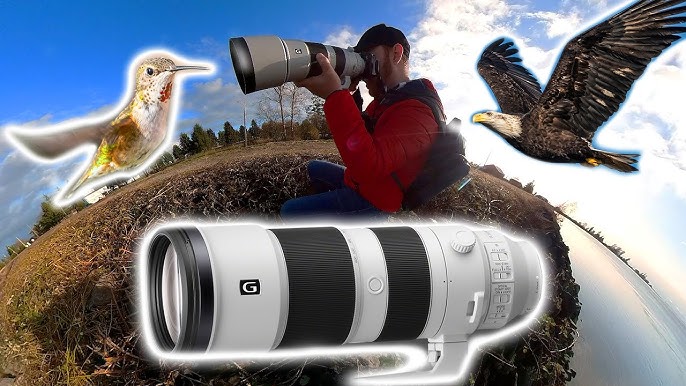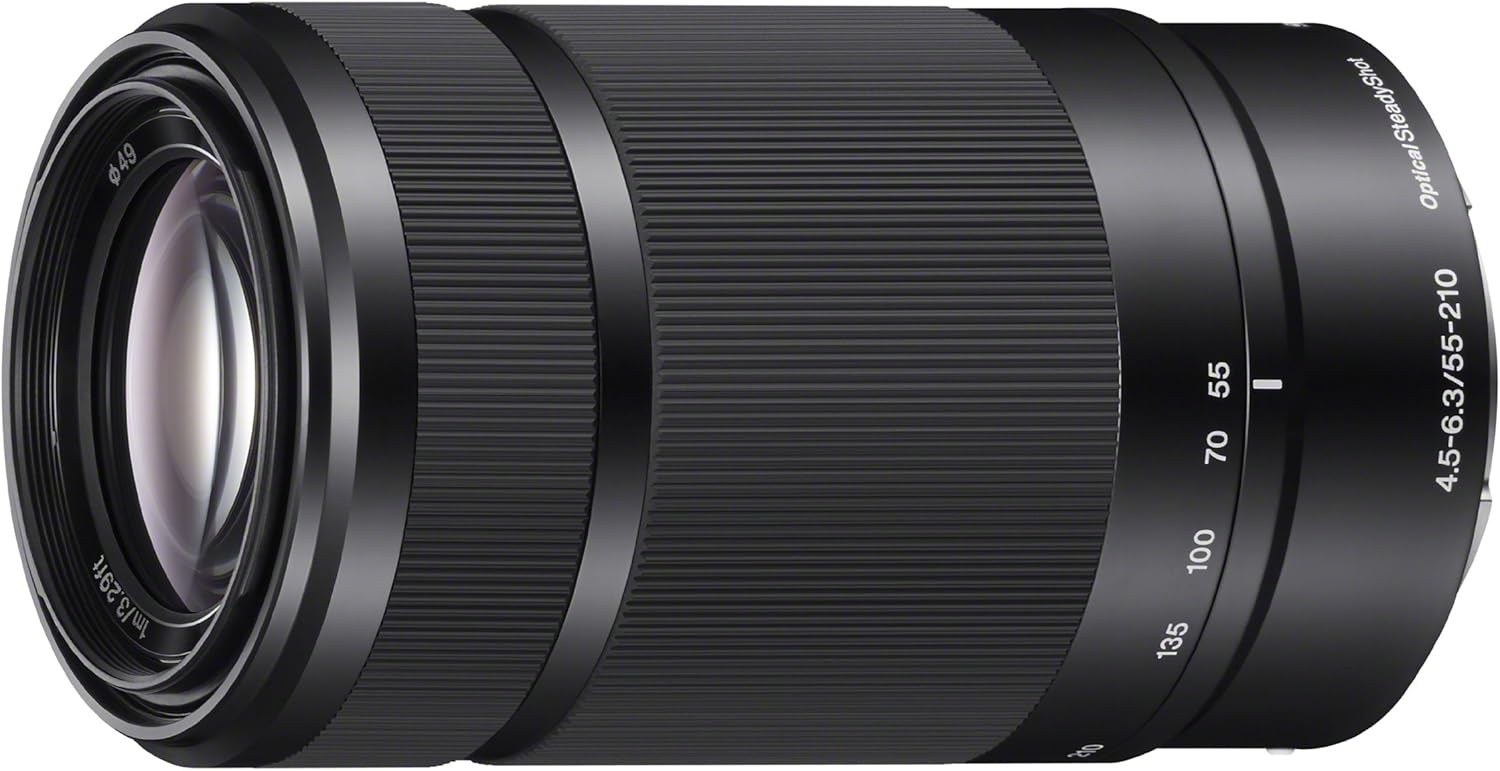Last Updated on January 22, 2024 by Sharon Advik
Many photographers want to know what telephoto lens they should buy.
Fortunately, many options on the market will suit any budget or level of experience!
If you’re looking for a telephoto lens that won’t break the bank, check out this list of the 7 best budgets for the Sony E mount I recommended.
Let’s drive in:
Which is the best budget telephoto lens for Sony E Mount?
Here are my recommended top 7 best budget telephoto lens for Sony E Mount:-
Tamron 70-180mm F/2.8: (Best Affordable and Compact Telephoto lens for Sony)
It came out in 2020 and has been in high demand.
I will give you three things to consider before buying this lens.
The first thing to know about this lens is that it completes Tamron’s holy trinity of lenses.
If you’ve heard the term holy trinity of lenses, it refers to the three zoom lenses many photographers like to have on hand when shooting.
It includes a wide-angle, mid-range, and telephoto lens; not tamarins are working on their version of the holy trinity of lenses, and this 70 to 180mm lens completes that collection.
So the advantage of going with Tamron is savings and costs in size and weight; this lens is more than one and a half pounds lighter than the Sony version.
On the other hand, this lens is so tiny and lightweight that you can stick it in your bag and not even think twice about it.
Even if you don’t use it, It’s not a big deal to have it with you, Just in case.
So this lens is super great for sticking in bags that typically would not hold a super-telephoto f 2.8 lens.
It does not have built-in image stabilization, typical if you look at the rest of the lenses, camera, and Holy Trinity.
It’s not the best in-body stabilization I’ve seen on the market, but it works well and complements this lens.
I was shocked by how stable the footage was when I shot a video with this 70 to 180mm and my Sony A7iii.
It did surprisingly well and backed up Tamarins’ claim that you don’t need image stabilization built into the lens.
So even though this lens has no image stabilization, it’s not necessarily a deal-breaker If you shoot video or at low shutter speeds.
So those are three key things to know about this lens, but here are a few bonus points.
This is a super simple lens.
There are two rubber barrels; the one closest to the camera controls the focus, and the other controls the zoom.
This lens extends when it’s being zoomed; there’s only one physical switch on the lens, which locks that zoom into place so that it doesn’t move while you’re in transit.
This lens is easy to use and works exceptionally well with Sony E-mount cameras.
You get all of the autofocus you’re used to in your Sony camera; the image quality is also excellent for both stills and videos. It’s tack sharp, and the colors pop.
So, if you get this lens true on a budget and need a super-compact telephoto lens, yes.
This is an excellent option for thinking about getting this lens.
I would call it at the first chance you can because it’s been in high demand since it came out.
After all, so many people want an affordable and compact telephoto lens.
The price point is correct, and the image quality is stunning for how much it costs.
Sony 70-300mm F4.5-5.6: (Best Budget Telephoto lens for Intermediate or Beginners)
It’s a mid-range telephoto lens with some decent reach.
This will not be a professional lens; I recommend this more to an intermediate or beginner.
It will give you a versatile focal range to capture anything from Sports to wildlife and even some landscapes or portraits; it will do many things decently.
The overall build is decent and pretty much what you’d expect for a G Series lens.
It’s got a convenient, customizable focus hold button and automatic manual focus switch, the focus limiting switch, and image stabilization.
It is all great to expect something in this price range.
The sizeable oversized zoom ring is grippy and turns firmly and confidently.
From the front, you’ll find 72-millimeter filter threads and Sony’s patented nano AR coating to eliminate flare and ghosting.
Despite a variable aperture, this lens boasts a decent minimum focus distance of 0.9 meters or just three feet.
You’ll find a sturdy metal mount on the back, but unfortunately, the absence of a rubber gasket makes this question regarding weather sealing.
I can’t say that I’m a fan of the multi-piece extension tube, which does open this lens up to dust issues, but overall, it is rated as dust and moisture-resistant.
As far as the overall value is concerned, it is pretty good for what it is.
The lens is only as good as its autofocus system.
Now, when it comes to video, this thing is not that impressive, but most likely, you will not be doing any significant productions with it.
It’s more of a stills lens for the video.
I did find it hunting quite a bit.
Still, the overall autofocus speed is quite impressive, and it’s almost silent and has an older lens.
Unfortunately, it doesn’t utilize Sony’s newest linear focus motors.
But when it comes to stills, It keeps up quite nicely.
It should be able to keep up with whatever you’re doing for the most part.
One of the best things about this lens is its focal range.
70 to 300 is a great big range; you’ll be covered with anything you want to shoot.
Both animal and human eye autofocus work great.
It’s a long reach, and an impressive minimum focus distance means you can get up-close macro leg shots with 9 aperture blades.
The bulk of this lens is lovely; it can come across as a bit nervous sometimes, but the overall quality is decent for a telephoto lens with a variable aperture.
One great feature of this lens is its image stabilization, and I’m happy to say that it works exceptionally well.
In my opinion, this is a must-have feature on any long telephoto lens.
If you’re using this lens on a crop sensor camera, it will be about 450 millimeters.
It will also work together with your in-body image stabilization to improve it.
When it comes to the sharpness and optics of this lens as a whole, it’s decent but nothing extraordinary.
I enjoy the versatility of this lens; its long focal range makes it great for many situations.
It will not be great in low light because of the variable aperture.
The autofocus is quick and adequate to build decent enough.
Maybe it’s just a price that I’m having a little bit of a hard time in this day and age; by no means has this lens let me down, and it does have some great qualities.
This is a great versatile lens for a hobbyist or a beginner with some coin.
This could be great for many people, as it covers a huge focal range.
If you are looking for a versatile telephoto and don’t have the budget for the GM, then maybe consider this one.
Sony 55-210mm F4.5-6.3: (Best Budget Telephoto Portrait lens for Sony)
I will check out the Sony 55 to 210 telephoto lens many of you have asked me to review.
It’s a pretty large lens. It’s about the same size collapsed as the 18 to 105.
However, it feels a little bit lighter to me.
You will get a large zoom ring or a minor focus ring that is decently smooth, not too crazy smooth, though, around the front.
This lens is made in Thailand and has a steady optical shot.
So overall, it’s a lightweight lens.
I was expecting it to weigh a lot more than it does.
Build quality is good.
Everything seems well put together; you have a metal mount around the back.
You have electronic connections because this lens does have autofocus. So, overall, it looks pretty good.
So, my initial impression of this lens is that I’m pleasantly surprised.
A pretty good lens gives you a range of 55, and 210 is huge.
It’s not super usable, even at 55, unless you’re outside shooting subjects from further away, but you can shoot some unique portraits with a crazy background.
Primarily at 135 millimeters and beyond, the steady optical shot works well because the lens is already zoomed in so far; small camera shakes will affect it.
It’s built well, lightweight, easy to use, and a little longer.
The only real gripe I’ve noticed is that the autofocus sometimes doesn’t hit the spot where you want it to, but overall, it’s about 90% accurate.
You can tell from the photos that this lens has a bit of distortion, as you would expect with zoom with such a wide range.
Flaring with this lens is cool because you can use it in portrait shots.
So overall, it’s an interesting lens.
I know it’s not going to be super-tack sharp in the corners. I already noticed that as an all-around, just casual shooting lens.
If you’re going to the zoo or filming sporting events, you don’t care about speed or low-light performance.
This is a pretty cool little lens that you can pick up.
Sigma 100-400mm F5-6.3: (Best Budget Telephoto Lightweight lens for Sony)
I liked this lens a lot; it surprised me.
The image quality photos and I can’t believe this is affordable for these or a telephoto zoom lens with this much reach and this is affordable.
The Sigma 100 to 400 is specifically designed for Sony E-mount cameras.
It has a smooth focus ring, a zoom ring, and a locking switch.
There’s an autofocus and manual focus switch; you must focus limiters.
There’s an autofocus lock button that you can customize for any function you want.
Then, you have the optical stabilization toggle, which you can turn off or switch on for general stabilization.
The entire body’s exterior is tough plastic but not like cheap plastic.
It’s a well-crafted plastic; I don’t know how to explain it; it just feels friendly toward me.
The bottom of the lens is this rubber ring that’s nice to grip, but you can attach a lens color to it if you remove it.
The sigma 100 to 400 has no constant aperture; depending on your focal length, it will vary from f5 to F 6.3.
Honestly, I don’t think that’s too big of a deal because if you’re shooting, even at 100 millimeters, you don’t want to shoot an F 2.8, like if you’re shooting wildlife sports or weddings like you want to make sure that your image is tack sharp and because you’re reaching so far.
Anyway, even at 100 millimeters, you’ll still get that excellent blurry background.
The lens is dust and splash-resistant, and a rubber gasket is at the bottom, so that’s nice.
And the autofocus performance of this lens is pretty good.
When I took photos, even at 400 millimeters, it was pretty snappy, and even shooting videos, the autofocus was good.
And yes, if you are wondering, the face and eye auto-tracking does work well with this lens as far as stabilization goes.
It was suitable for taking photos, especially when my shutter speed was high.
But I noticed many shakes for videos, maybe not so much as when I was filming at 400 millimeters handheld.
I was wondering why at first because the in-body image stabilization of my Sony A7ii is pretty good.
Still, I noticed that the stabilization on the lens disables the bus inside my Sony camera, so keep that in mind.
The last thing about Sigma 100 to 400 millimeters is that it handles chromatic aberration well.
Like, I couldn’t tell right off the bat.
Maybe if I pixel peep and like pixel peep, I could see some, but at first glance, I couldn’t tell at all, even with video.
So overall, I like this lens; I’m surprised at how good the image quality is for photos and videos.
I’m surprised at how lightweight this lens is, and I’m so amazed that this lens costs that affordable price.
Tamron 70-300mm F/4.5-6.3: (Best Budget Telephoto Zoom lens for Sony)
So, when I was filming with this lens, I noticed that this is a satirical lens.
That fits a wide variety of shooting, from wildlife to sports and filming people and taking portraits; the autofocus on this lens is excellent.
It’s very fast, accurate, and silent.
We did some autofocus tests with the lens using the Sony A7iii, and the autofocus worked very well with all focal lengths.
From 70 millimeters to 300 millimeters, there were no issues at all.
Another exciting thing is using this lens on a crop sensor APSC camera like my Sony A 6500, which has a 1.5 times crop that makes this lens.
And the equivalent of 105 to 450 millimeters on a full-frame camera, like the Sony A7iii, is a lot of rain and reach.
One of the most fantastic things about shooting with a telephoto lens is that you can zoom in on a distant object and make it appear closer.
I was surprised by how pleasing Bokeh or background blur you can get with this lens at 300 millimeters.
I noticed that this lens is excellent for both videography and photography.
So, I shot a couple of photos with this lens.
And I noticed that it’s cool that with 70 millimeters, you can get sharp, wider shots.
But to get closer to the subject, you can always zoom in to 200 or even 300 millimeters.
You can also get very decent portrait shots with this fantastic background blur.
This lens is relatively small and lightweight; it works well with gimbals.
So we filmed a couple of gimbal shots and used Ronin’s gimbal with this lens set at 300 millimeters, which gave this fabulous look and emphasized the sense of movement.
Another great bonus I like about this lens is that the filter size is 67 millimeters, the same as in almost all other Tamron lenses that have come out within the last year or two.
So, that means you will use the same ND filter in all lenses.
This lens is protected from moisture and dust, which is great if you shoot or film in harsh conditions.
And I must say that even though this particular lens is a pre-production model, not the actual production model, it worked like a charm without any issues.
So, if you’re looking for a versatile telephoto zoom lens that gives you an excellent bang for your buck, I highly recommend this lens.
Sigma 150-600mm f/5-6.3: (Best telephoto lens for Sony E mount full frame)
No matter your style or how you take shots, you’ll need that long lens at some point.
Catches a batting stance from the sidelines?
Capture an intimate moment while escaping the snap-happy tourists.
Spectacular sea life off of shore in Maui?
Need to get that far-away shot with fixed focus and great clarity?
This Sigma 150-600mm f/5-6.3 telephoto zoom lens is for you.
This super-telephoto lens can get images close to 600mm in length; this super-telephoto lens captures sharp detail in photos and videos from far away.
This is the best telephoto lens for many thanks to its bright, sharp images with wide contrast at every shooting range.
This Sigma 150-600mm f/5-6.3 lens is perfect for sports and wildlife photography or a telephoto zoom in general.
The 15x zoom range of this sleek and discreet imaging tool produces crisp images at distances up to 600 feet away (or just 10.4 inches).
They are allowing travelers an exhilarating experience of chasing wild animals through their favorite national parks.
It’s also perfect for capturing beautiful landscapes that amateur photographers cannot reach.
And how about those incredible details?
Thanks to Image Stabilization (VC) technology, you won’t miss any shots, ensuring everything is captured perfectly.
This lens is designed to cover Sony” ‘s full-frame sensor, so you get crisp details across the entire field of view with very little vignetting.
It features a beautiful super multi-coating on all air surfaces, which means each pixel is well defined, meaning sharper images with less noise.
A must-have for the professional photographer, this supersized lens will cover your digital camera’s shortfalls with its incomparable reach of 150-600mm.
With Sigma’s dedication to making only the best lenses on the market, we guarantee this will not disappoint.
Capture some stunning shots, and don’t be the one person not having that fun Sigma moment!
This may be one of the best investments any photographer can make!
Sigma 100-400mm f/5-6.3: (Best budget telephoto lens for wildlife photography)
The Sigma 100-400mm f/5-6.3 lens for Sony E Mount is the best budget telephoto lens on the market – perfect for wildlife photographers!
This budget-friendly zoom is perfect for those who want to jump into wildlife photography on their latest holiday but don’t want to spend too much money.
This is an excellent telephoto lens for APS sensors in Sony E-mount.
This lens is perfect for activities like game bird shooting or watching dolphins playing offshore, as it delivers beautiful images with low noise, even in low-light settings.
The lens is the perfect companion to give wildlife photography a new life and perspective.
This lens also gives you some wiggle room if your subject gets close.
You’ll be able to step back a few steps without missing anything, thanks to this impressive 100-400mm range!
You can be sure this product will be helpful when zooming in and reading license plates from a half-mile away (in theory).
This versatile zoom lens offers excellent autofocus, allowing continuous AF with your compatible Sony cameras during video recording.
The optical design features a wide, constant maximum aperture that minimizes chromatic aberration throughout the zoom range—even when shooting at 400mm.
It offers a 400mm focal length, balancing the gap between your kit lens’s wide-angle and telephoto end.
With this new Sigma outfit, you will have a durable construction that utilizes three extra-low dispersion elements and four glass-molded aspherical lenses.
I give shooting any time of day with excellent color correction and accuracy from center to edge – every single shot.
This lens offers fantastic value for photographers at all levels.
CONCLUSION:
Alright, guys, that concludes all the lenses we will discuss today in this article.
Do you guys have any experience with these lenses? What are your thoughts on them?
Which is the Best budget telephoto lens for Sony E-mount?
Is there a lens I didn’t mention in this article that you love using for Sony E-mount?
Would you please leave your thoughts and comments below?
Related Posts:
14 Best Third-Party E-Mount Lenses:
I am a Professional and Certified Digital Photographer born in the USA. I have been in this field of photography for 22 years, and in these years, I have used many photography lenses and Cameras, which I want to share here on this website about my experience. The idea for Bestoflens.com is to provide honest information about different Lenses and Camera products in the format of a “Best lenses for AYZ” list. I want this website to be the last destination for people to pick the best Cameras and lenses to fit their needs. You can find our unbiased reviews here on Bestoflens.








